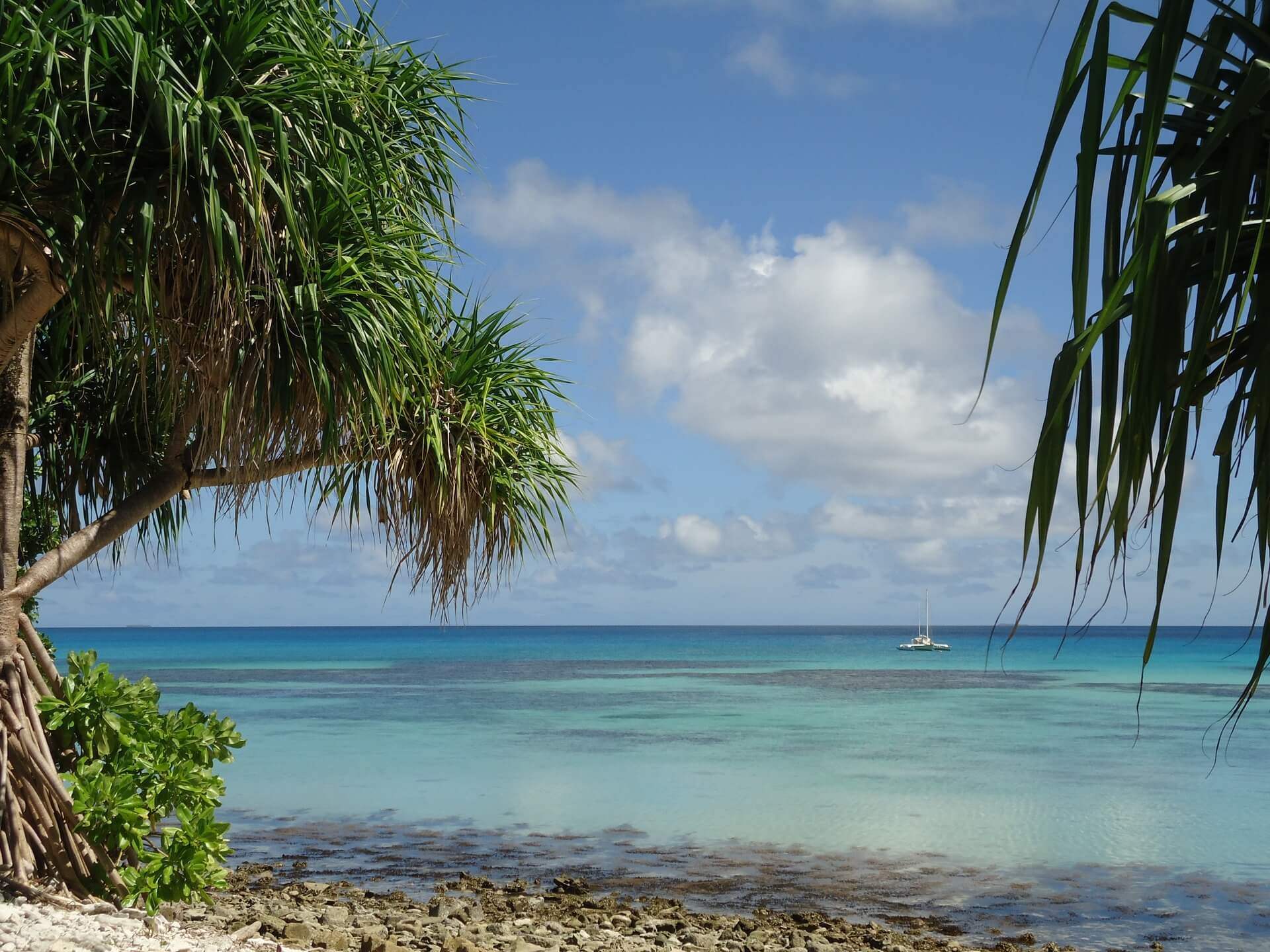Discover Tuvalu

One of the world’s smallest nations — peaceful, poignant, and powerfully quiet
Tiny, remote, and barely rising above sea level, Tuvalu is one of the least-visited countries on Earth — and one of the most fascinating. This Pacific microstate consists of nine low-lying coral atolls, scattered across thousands of kilometers of ocean between Fiji and Kiribati. With a total land area of just 26 square kilometers, Tuvalu has no mountains, no rivers, no nightlife — and no stress.
Travelers who make the journey here aren’t chasing resorts or luxury; they’re drawn by the desire to witness a vanishing world, connect with people whose culture thrives on simplicity, and experience the deep calm that comes from life lived at the edge of the sea. With rising oceans at its doorstep, Tuvalu also offers a rare firsthand encounter with climate reality — told not through data, but through daily life.
How to Get to Tuvalu
Tuvalu is remote, and reaching it takes planning — but the reward is total escape.
- Flights arrive at Funafuti International Airport (FUN), located on the main atoll of Funafuti, the country’s capital.
- The only regular connection is via Fiji Airways, which operates 2–3 flights per week from Nadi (Fiji).
- There are no regular ferries or cruise connections for international travelers.
Once on Funafuti, travel to outer atolls (such as Nanumea, Nukufetau, or Nui) is possible by infrequent inter-island ships or government-chartered boats — schedules vary and are often weather-dependent.
What to See in Tuvalu
Tuvalu is about small-scale wonder — not monuments or attractions, but moments: the curve of an atoll at sunset, the sound of kids playing barefoot in the tide, the scent of breadfruit roasting on a home fire.
Funafuti Atoll is the center of Tuvaluan life. Its main islet, Fongafale, is narrow — you can walk from lagoon to ocean in just minutes. Government buildings, a small hospital, homes, churches, and the only guesthouses are found here. You can walk the length of the airstrip (also the town’s main public space) and be greeted by locals, hear church choirs practicing, or see kids cycling and playing volleyball in the evenings.
To experience Tuvalu’s natural side, take a boat to the Funafuti Conservation Area. This protected marine reserve includes uninhabited islets, coral reefs, and lagoon waters perfect for snorkeling, swimming, and quiet exploration. Sea turtles, reef sharks, giant clams, and vibrant coral make it one of the country’s ecological gems.
If timing allows, try to visit one of the outer islands, where village life remains completely traditional. Days revolve around fishing, weaving, and family. Visitors are few, but when welcomed, are treated with warmth, ceremony, and storytelling.
What to Do in Tuvalu
Tuvalu is the ideal destination for travelers seeking peace, reflection, and cultural honesty.
You can swim and snorkel in clear lagoons, paddle a canoe along reef edges, or take a day trip by boat to sandbars and uninhabited motus. Wildlife enthusiasts will enjoy birdwatching on islets and reef flats, and the shallow waters often attract rays, turtles, and tropical fish.
More than anything, Tuvalu is about immersing in local life. Attend a church service on Sunday — where powerful singing fills the air. Learn about mat weaving, coconut husking, or how to prepare pulaka (swamp taro) from local families. In the evenings, watch the island come alive as children play on the airstrip, families gather for dinner, and the stars emerge over the ocean.
If you’re lucky, your visit may coincide with a traditional dancing event, a community cricket match, or even a national celebration. But even on quiet days, Tuvalu’s soul is in the details — and the silences.
When to Visit Tuvalu
Tuvalu has a hot, humid tropical climate, with temperatures averaging 28–31°C (82–88°F) year-round.
- Best time to visit: May to October, during the dry season — less rain and fewer storms.
- Wet season: November to April can bring heavy rainfall, rough seas, and tropical storms, but also lush greenery and cooling breezes.
There are no major tourist seasons, so the island’s atmosphere remains constant and low-key regardless of timing.
Travel Tips for Tuvalu
- Currency: Australian Dollar (AUD); cash is king — there are no ATMs, so bring enough for your stay.
- Language: Tuvaluan and English
- Transport: No public buses — explore Funafuti by foot, bicycle, or rented scooter.
- Connectivity: Wi-Fi is available at hotels and government buildings, but is slow and limited.
- Health: Medical care is basic; bring essential medications and sun protection.
Tuvalu is not a place you stumble upon — it’s a destination you choose, because you want something real. In this tiny country, you’ll find no resorts, no crowds, no distractions — only ocean, tradition, and a way of life shaped entirely by nature.
Whether you come for quiet, for connection, or simply for the beauty of a world rarely seen, Tuvalu offers you the most precious travel experience of all: the chance to be still — and to feel that stillness echo.